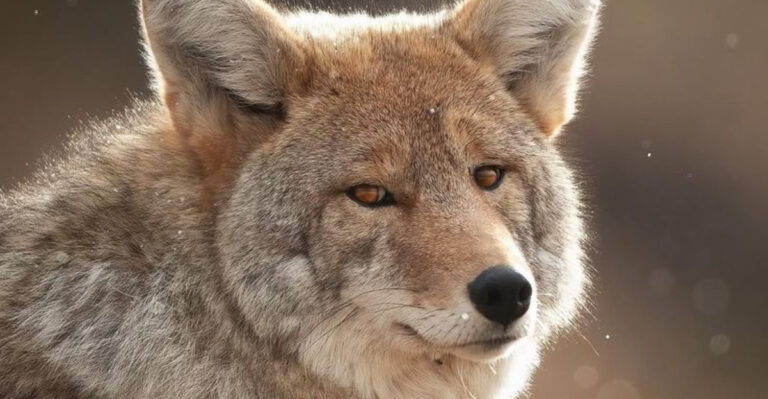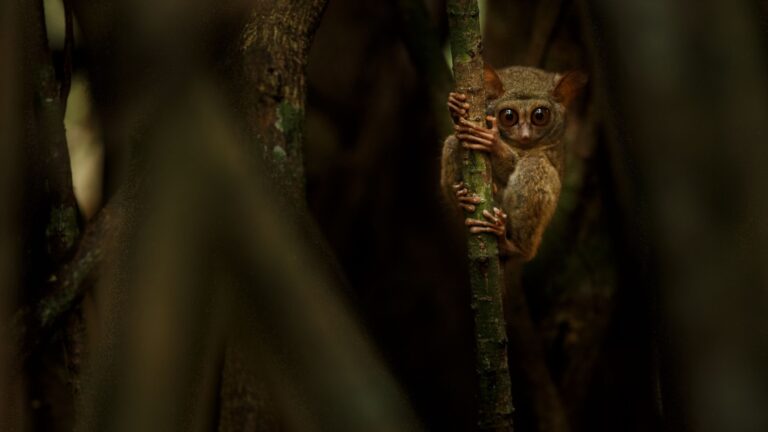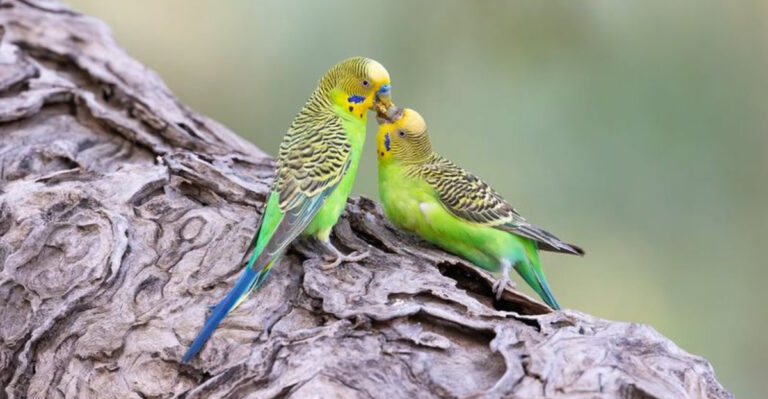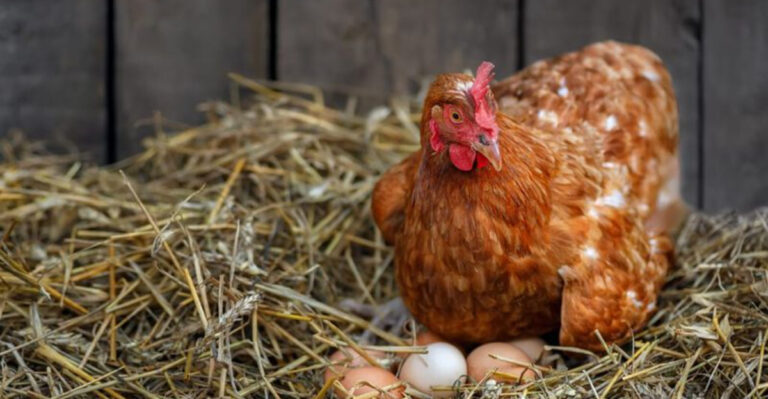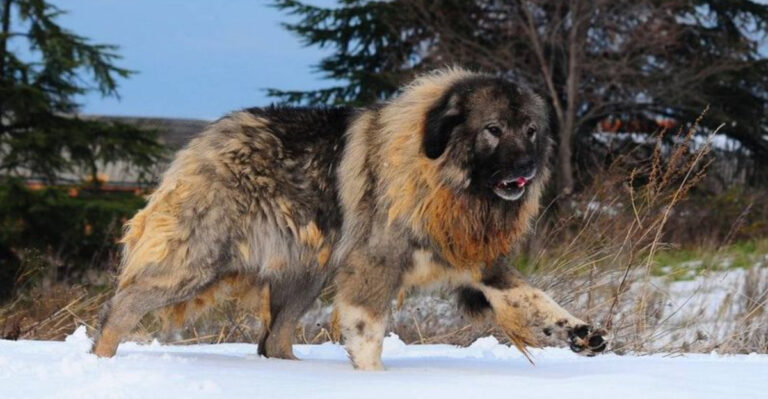10 Fun Facts About Harp Seals
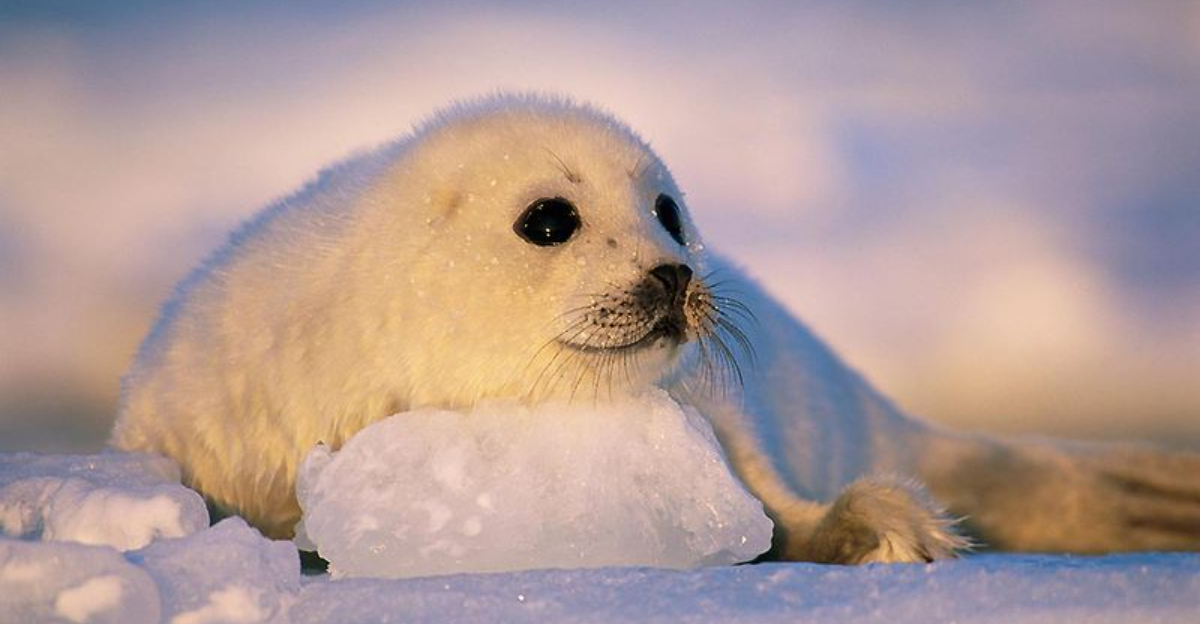
Harp seals, with their captivating eyes and playful nature, are one of the most enchanting inhabitants of the Arctic.
These fascinating creatures are well-adapted to life in the icy waters, displaying unique traits and behaviors that make them stand out.
From their fluffy white newborn fur to their impressive migratory journeys, each aspect of their lives is a testament to their resilience and adaptability in the harsh Arctic environment. So, let’s explore fun and intriguing facts about harp seals that highlight their remarkable lives.
1. Ice Babies
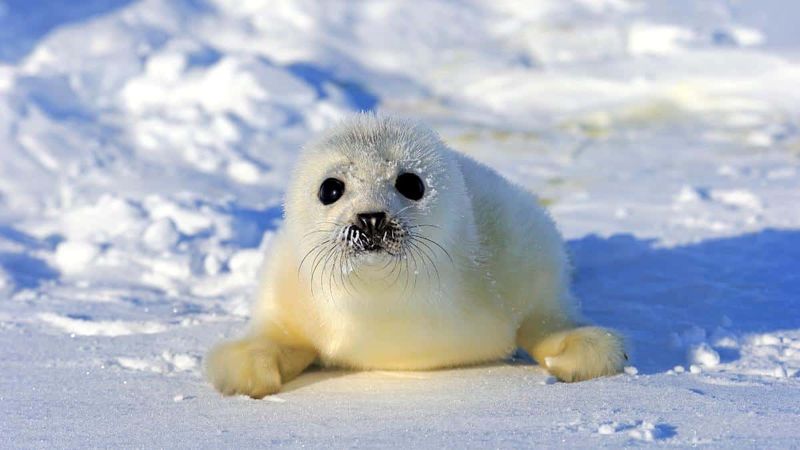
Harp seal pups, often referred to as “ice babies,” are born on the icy terrains of the Arctic. These adorable newborns are instantly recognizable by their soft, fluffy white fur, which serves a crucial survival purpose.
This fur acts as a perfect camouflage against the icy backdrop, providing them protection from predators like polar bears. The striking whiteness of their coat also reflects sunlight, helping them stay warm in the frigid temperatures.
The birth of a harp seal pup is a fascinating spectacle. Weighing around 25 pounds at birth, these pups are nurtured by their mothers in the ever-shifting ice landscapes.
The bond between the mother and pup is strong, with the mother constantly nearby to provide warmth and nourishment. This early stage of life is critical, as it sets the foundation for the pup’s growth and development.
The white coat, however, is not permanent. Within a few weeks, the pup undergoes a remarkable transformation, shedding its white fur to reveal a silvery-gray coat similar to that of adult harp seals.
This change marks the beginning of their journey into adulthood, equipped with the skills needed to thrive in the Arctic wilderness.
2. Fast Fur Change
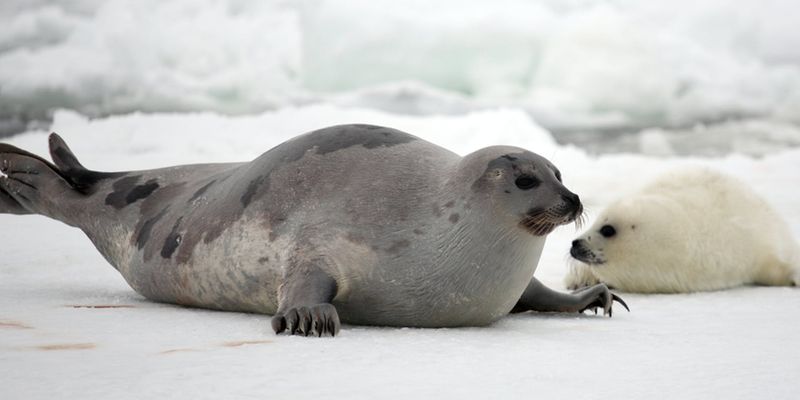
In the life of a harp seal pup, one of the most dramatic transformations occurs just weeks after birth. Born with a distinctive fluffy white coat, these pups undergo a significant fur change within two to three weeks. This rapid transition is essential for their survival and adaptation to their environment.
The initial white fur, which offers excellent camouflage on the ice, begins to shed as the pup matures. The new silvery-gray coat that emerges is not only more streamlined but also better suited for life in the water. This change signals the pup’s readiness to start venturing into the ocean, where it will spend much of its life.
This fur transition is a rite of passage for harp seal pups, marking their growth and the beginning of more independence. As they shed their white fur, they also start developing the skills necessary for survival, such as swimming and hunting.
This period is crucial as it prepares them for the challenges of living in the Arctic and ensures they are ready to join the adult seals in their migratory journeys.
3. Super Swimmers
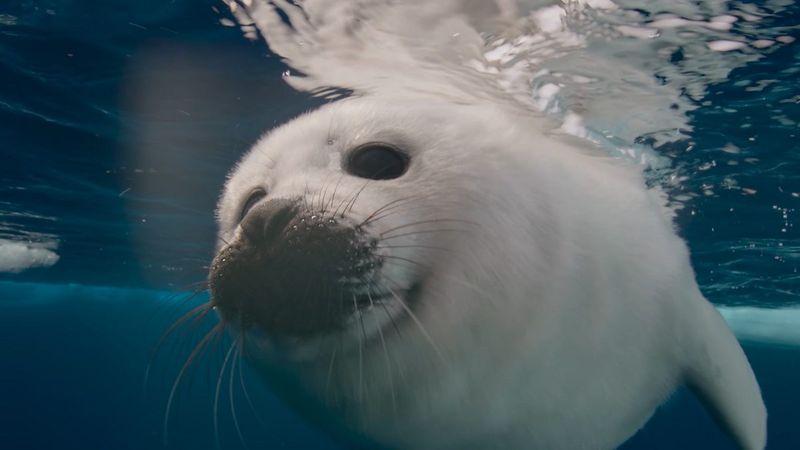
Harp seals are renowned for their exceptional swimming abilities, a skill that is integral to their survival in the Arctic environment.
Despite being born on solid ice, these seals quickly adapt to life in the water, becoming proficient swimmers within weeks of birth. Their streamlined bodies and powerful flippers allow them to navigate the ocean with grace and speed.
One of the most remarkable feats of harp seals is their ability to dive to incredible depths. They can descend over 1,300 feet into the ocean, remaining submerged for up to 20 minutes at a time.
This impressive capability enables them to access food sources that are unavailable to many other marine animals, such as deep-sea fish and squid.
The super swimming skills of harp seals not only aid in hunting but also play a vital role in their migratory patterns. Each year, they travel thousands of miles between their breeding and feeding grounds, showcasing their endurance and navigational prowess.
These journeys are crucial for their survival, as they allow harp seals to exploit different habitats and ensure they have access to abundant food resources throughout the year.
4. Milk Power
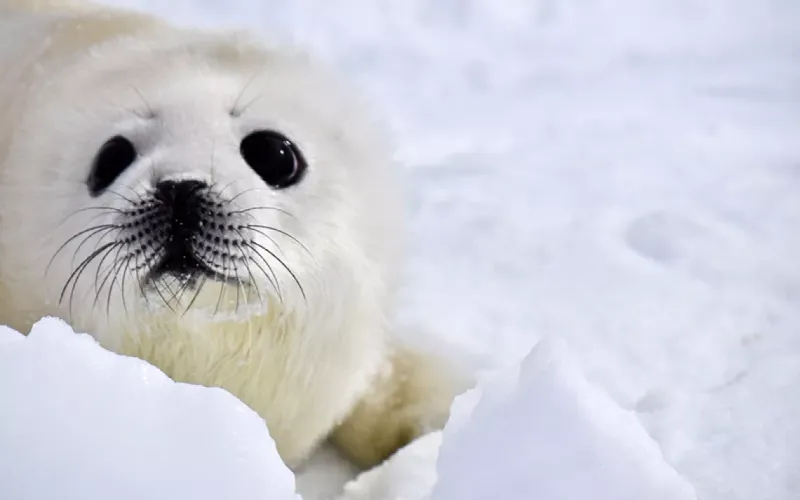
In the early days of a harp seal pup’s life, nourishment is key to survival, and the mother’s milk plays a vital role in this. Harp seal mothers produce some of the richest milk found in the animal kingdom, with a fat content that can reach up to 60%. This nutrient-dense milk is crucial for the pup’s rapid growth and development.
Each day, the pup gains about 5 pounds, thanks to the high-fat milk it consumes. This rapid weight gain is necessary to build up the blubber reserves that will insulate the pup against the freezing Arctic temperatures. The blubber also serves as an energy store that the pup will rely on during its initial weeks of independence.
The nursing period is relatively short, lasting only about 12 days. During this time, the bond between mother and pup is strong, with the mother dedicating all her efforts to feeding and protecting her offspring.
After weaning, the mother leaves, and the pup begins its journey towards independence. With a solid foundation of blubber and fat reserves, the pup is well-equipped to face the challenges of the Arctic and start learning essential survival skills.
5. Big Brains
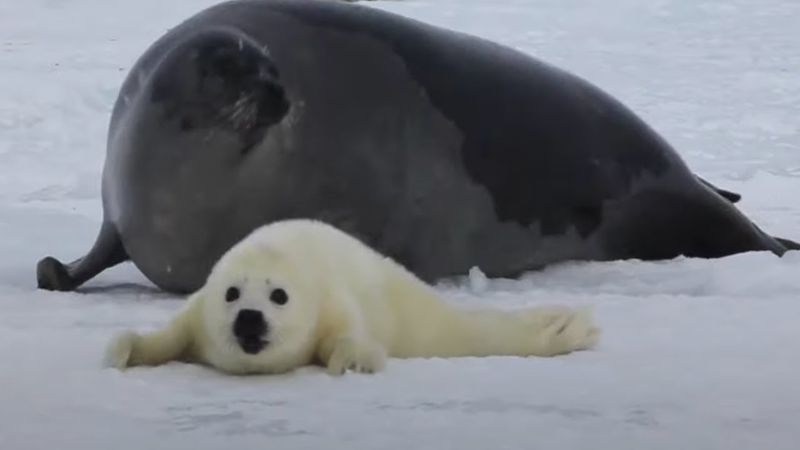
Harp seals are not just adorable; they are also highly intelligent creatures with remarkable cognitive abilities. Their big brains enable them to recognize sounds, signals, and even distinguish human voices. This intelligence is crucial for their survival in the complex Arctic ecosystem, where they must constantly adapt and learn.
In the wild, harp seals use their intelligence to navigate the ever-changing ice landscapes and find food. They are known to communicate using a variety of sounds, such as clicks, whistles, and grunts, which help them maintain social bonds and coordinate group activities. This vocal communication is a testament to their social nature and intelligence.
Their ability to learn and remember is not just limited to survival skills. Harp seals have been observed in captivity exhibiting playful behavior and solving puzzles, demonstrating their curiosity and problem-solving capabilities.
This adaptability and intelligence are key to thriving in their harsh environment, where they must continuously adapt to new challenges and opportunities. Their big brains make them not only survivors but also fascinating creatures worthy of admiration and study.
6. Long-Distance Travelers
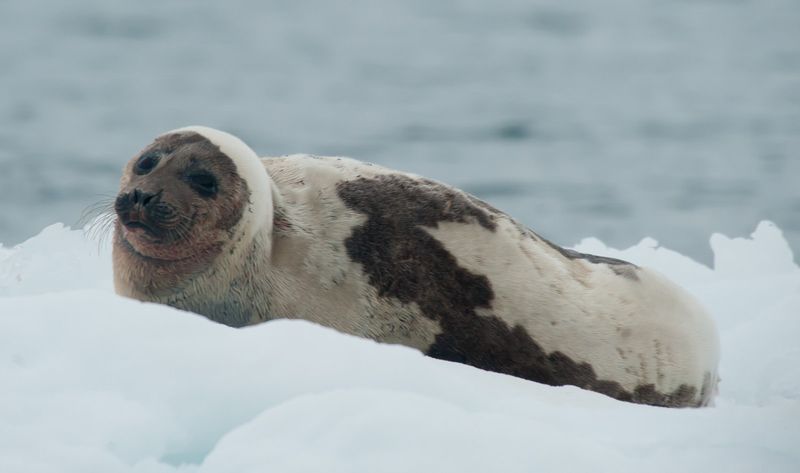
Harp seals are remarkable long-distance travelers, known for their extensive migratory journeys across the Arctic and sub-Arctic regions.
Each year, these seals embark on epic voyages, covering thousands of miles between their breeding and feeding grounds. This migratory behavior is essential for their survival, allowing them to exploit different habitats and access abundant food resources.
During their migration, harp seals display incredible endurance and navigational skills. They travel in large groups, often forming massive colonies on the ice.
This social behavior not only provides protection from predators but also facilitates the sharing of information and resources. The seals rely on environmental cues, such as ocean currents and earth’s magnetic field, to guide them on their journeys.
The migratory pattern of harp seals is a testament to their adaptability and resilience. Despite the challenges posed by climate change and shifting ice conditions, these seals continue to undertake their long-distance travels, showcasing their ability to thrive in a dynamic environment.
Their journeys are a remarkable natural phenomenon, illustrating the interconnectedness of Arctic ecosystems and the importance of preserving these habitats for future generations.
7. Social Butterflies
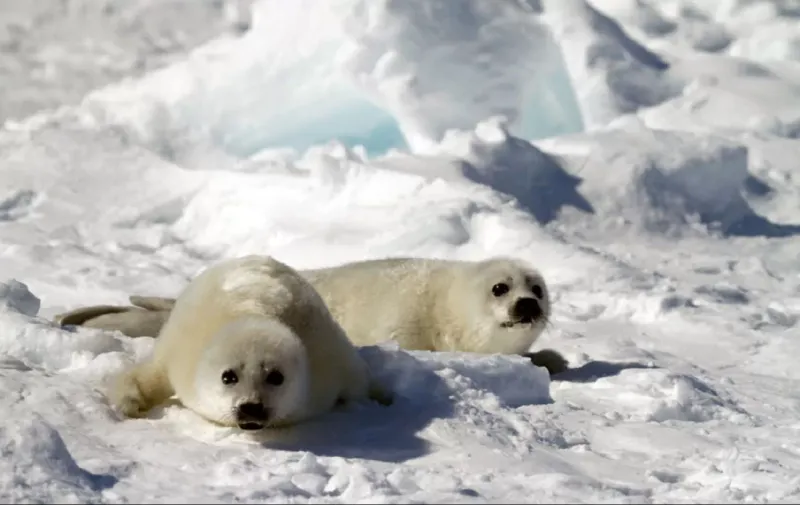
Unlike some seal species, harp seals are highly social creatures that thrive in the company of others. Their social nature is particularly evident during the breeding season when they gather in large groups on the ice, forming colonies that can number in the thousands.
This congregation provides numerous benefits, including protection from predators and increased opportunities for social interaction.
Harp seals communicate with each other using a variety of vocalizations, such as clicks, whistles, and barks. These sounds facilitate social bonding and coordination within the group. The seals also engage in playful behaviors, such as chasing and mock fighting, which help strengthen social ties and establish hierarchies.
The social structure of harp seal colonies is fascinating, with individuals often forming close bonds with specific companions.
This social behavior extends beyond the breeding season, as harp seals are known to travel in groups during their migratory journeys. Their social lifestyle plays a crucial role in their survival, enabling them to share resources and information, and adapt to the challenges of living in the harsh Arctic environment.
8. No Solid Food For Weeks
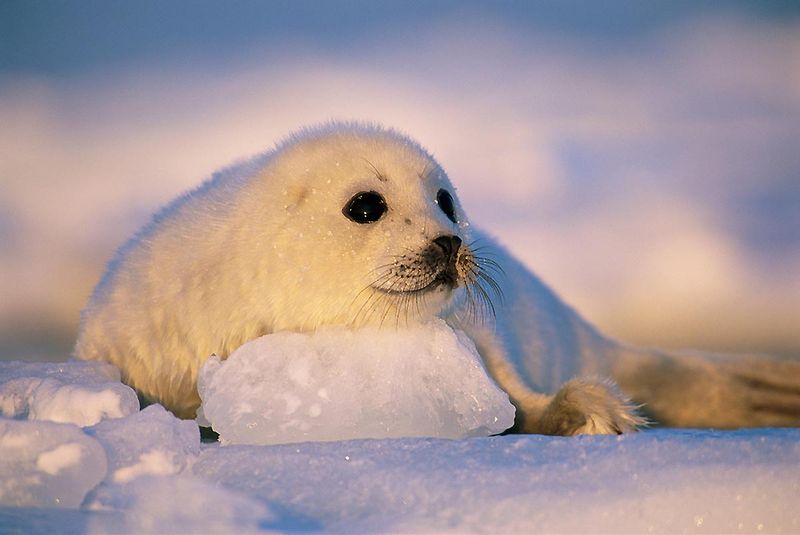
After being weaned at just 12 days old, harp seal pups enter a unique fasting period that can last up to six weeks. During this time, the pups rely entirely on their blubber reserves for energy, as they do not consume any solid food. This fasting period is a crucial stage in their development, as it prepares them for the challenges of independent life.
The blubber that the pups accumulate during their mother’s nursing period provides them with the necessary insulation and energy to survive the harsh Arctic conditions.
As they fast, the pups remain on the ice, where they are relatively safe from predators and can rest and conserve energy. This period of solitude and fasting allows the pups to develop essential survival skills, such as swimming and hunting.
Once the fasting period ends, the pups begin to venture into the water, where they start to hunt for their own food. This transition marks a significant milestone in their lives, as they learn to navigate the ocean and find food independently.
The fasting period is a testament to the resilience and adaptability of harp seal pups, as they prepare to join the ranks of adult seals and face the challenges of the Arctic.
9. Unique Sounds
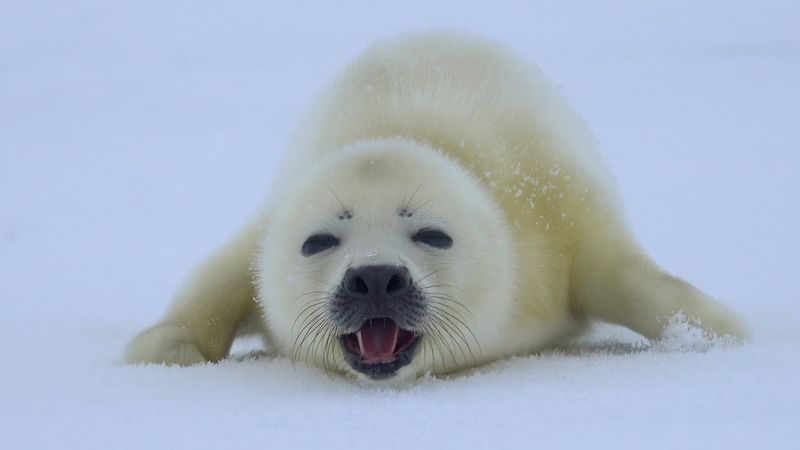
Harp seals are known for their unique ability to communicate using a diverse array of sounds. These vocalizations, which include clicks, whistles, and grunts, play a vital role in their social interactions and survival.
Underwater communication is especially important for harp seals, as it allows them to maintain contact with each other in the vast and often murky Arctic ocean.
The sounds produced by harp seals serve various purposes, from attracting mates to warning others of potential threats. These vocalizations are also used to establish social hierarchies and coordinate group activities, such as hunting and migration.
The complexity and variety of their communication highlight the intelligence and social nature of these remarkable creatures.
In addition to their vocal abilities, harp seals also rely on body language and visual signals to communicate. Their expressive eyes and agile movements convey emotions and intentions to other members of their group.
This combination of vocal and non-vocal communication ensures that harp seals can effectively interact with each other and respond to the dynamic challenges of their environment.
10. Life In The Cold
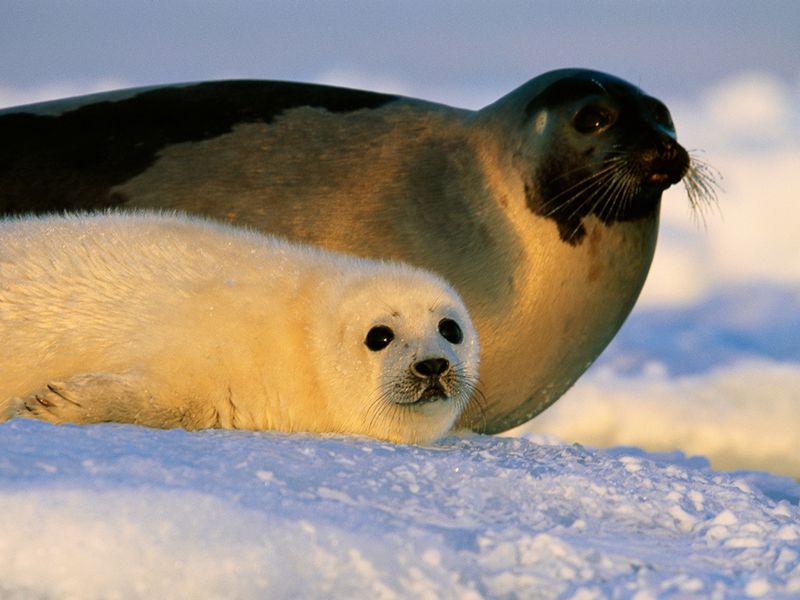
Harp seals are perfectly adapted to life in the extreme cold of the Arctic. One of their most remarkable adaptations is their thick layer of blubber, which provides insulation against the freezing temperatures and icy waters.
This blubber not only keeps them warm but also serves as an energy reserve, allowing them to survive periods of food scarcity.
The Arctic environment, with its temperatures dropping below -20°F, poses significant challenges to all its inhabitants. Harp seals, however, thrive in these conditions, thanks to their unique physiological adaptations.
Their sleek, waterproof fur and streamlined bodies enable them to navigate the icy waters with ease, while their blubber ensures they remain warm and buoyant.
In addition to their physical adaptations, harp seals have developed behavioral strategies to cope with the cold. They form large colonies on the ice, which provides safety in numbers and helps conserve body heat.
By huddling together, they reduce their exposure to the harsh winds and share warmth with each other. These adaptations, both physical and behavioral, are a testament to the resilience of harp seals, as they continue to flourish in one of the most challenging environments on Earth.

